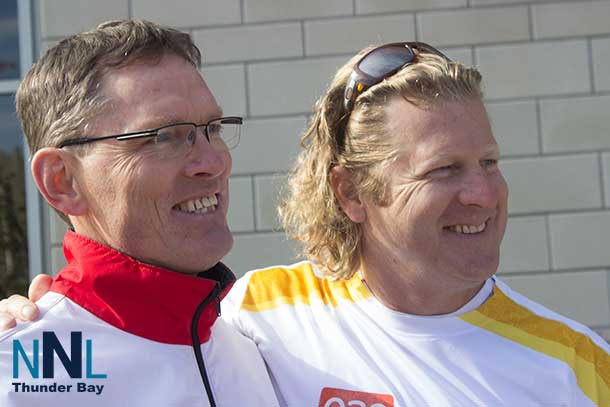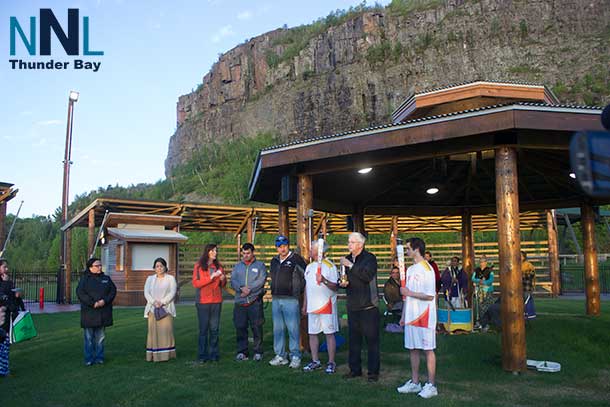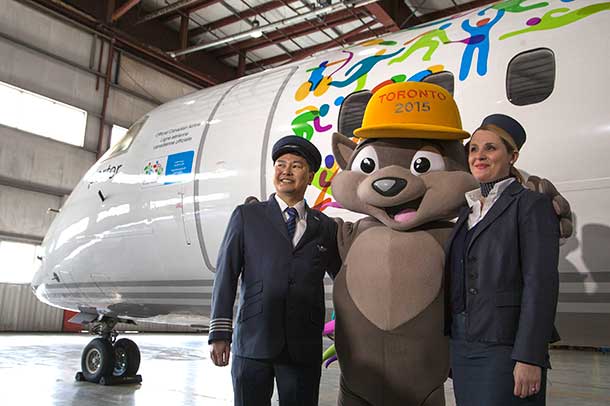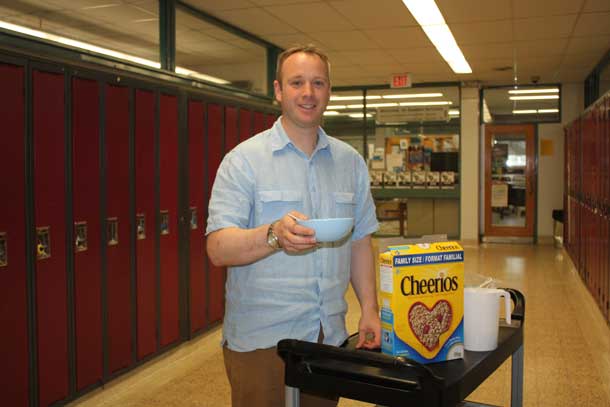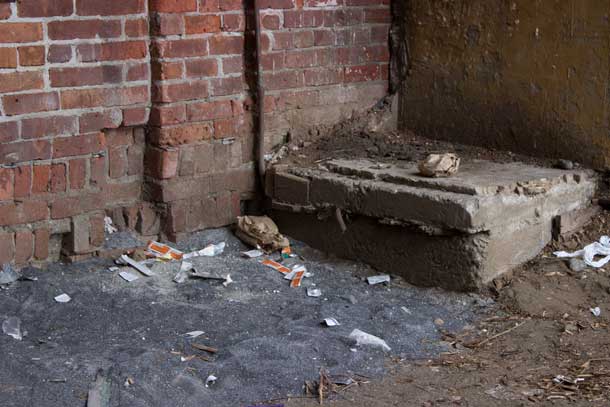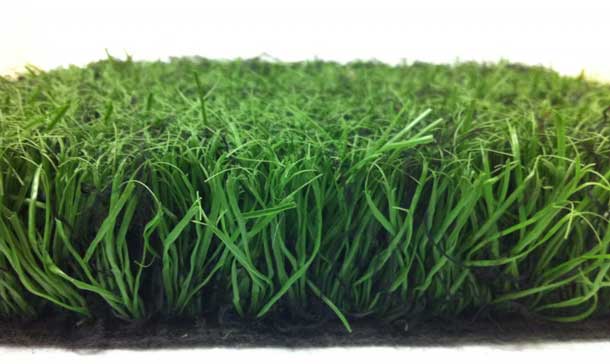 TORONTO – Editorial – Turf Wars – how green is artificial turf? Kudos to those opposing the University of Toronto’s plan to use artificial turf for its back campus field, in time for the 2015 Pan Am/Parapan Am Games.
TORONTO – Editorial – Turf Wars – how green is artificial turf? Kudos to those opposing the University of Toronto’s plan to use artificial turf for its back campus field, in time for the 2015 Pan Am/Parapan Am Games.
The opponents are right: there are good reasons for health and environmental concern about ripping up grass (muddy as it may be) and replacing it with artificial turf. But the law hasn’t yet caught up. Toronto’s Official Plan, for example, is dotted with mention of “green spaces”, but it never addresses whether this includes fenced off areas of plastic and rubber turf. It seems unlikely that planners were contemplating artificial turf when they rhapsodized about their vision for the City: “The vision of the Plan is about creating an attractive and safe city … – a city where people of all ages and abilities can enjoy a good quality of life. A city with:… clean air, land and water; green spaces of all sizes …” and “The principles that follow for steering growth and change to some parts of the City, while protecting our neighbourhoods and green spaces from development pressures, are the first layer of a sound planning process for shaping the City’s future.“
In this article, we provide an overview about artificial turf, then some information about what UofT proposes to use, followed by possible environmental and health concerns. Finally, we propose issues to consider when choosing between natural and artificial turf.
Background – artificial turf
Artificial turf has come a long way since the first artificial playing surface, Chemgrass, was marketed in 1964; it was essentially a short pile carpet with a foam backing. The natural grass field in Houston’s Astrodome died when clear plastic panes of the retractable ceiling were painted black to reduce glare so that players could actually see the field; in 1966, this was replaced with Chemgrass, which was renamed AstroTurf. The product became popular for professional sports venues, but athletes complained that the turf was harder than natural surfaces, causing more injuries. In the 1990’s many ballparks (including Houston’s new stadium) converted to natural grass. Some have since switched back to newer brands of artificial turf.
Some brands of artificial turf are made of a polyethylene-propylene material that is woven to look like blades of grass; this is held upright by an infill layer composed of recycled tires, small rubber particles (called crumb rubber), which may be mixed with silica (sand). Infill is spread to a depth of 2-3 inches over the surface of the field. It takes from 20,000 to 40,000 used tires to produce infill required to cover a football field.
Crumb rubber particles can aerosolize and be inhaled, or tracked into homes on clothing and athletic equipment. A nuisance to athletes, it may be a health concern when children are exposed. The rubber may contain chemicals like ethylene-propylene, styrene-butadiene as well as vulcanizing agents, fillers, plasticizers, anti-oxidants, polyaromatic hydrocarbons, phthalates and volatile organic compounds (VOC). There is concern that as the crumb rubber deteriorates, it may release chemicals like arsenic, cadmium, lead and nickel (these substances are released during tire fires).
A 2006 study by the Norwegian Institute of Public Health and the Radium Hospital, Artificial turf pitches – an assessment of the health risks for football players examined health risks on turf used in indoor halls, which consist of artificial turf fiber and rubber granulates. It looked at exposure via inhalation, skin contact and ingestion, concluding that that the granulate used in many types of artificial turf contains chemicals that could harm human health, but in extremely low concentrations, and these are leached from the granulate in very small quantities, and air concentrations are very low. Total VOC were found at higher concentrations than generally found in homes, but the study concluded that the values found do not represent an elevated health risk, adding “… but our knowledge of this area is rather inadequate…”. Although there is some evidence of a link between phthalate exposure and development of asthma and/or allergies, at this point – due to a lack of knowledge – a risk assessment was not possible.
Environment & Human Health Inc.’s 2007 report Artificial Turf summarized a study that looked at the leaching potential of metals from tire crumb samples, as well as chemicals released from the crumbs. In one experiment, 25 chemicals were identified (with 72-99% certainty) in tire crumbs, as were metals (mainly zinc, but also selenium, lead and cadmium). Among the report’s recommendations is to limit exposure to turf fields that contain rubber tire crumbs until more is known about human exposure issues, and that those allergic to latex should use caution when using fields or playgrounds that include these materials.
The Swedish Chemicals Agency reported that although synthetic turf contains recycled tire rubber that may cause local environmental risks, the amount of substances like zinc and phenols that leach from the rubber granulate is small, so any environmental effects would likely be local, i.e., they won’t reach watercourses. They recommend that water quality be analysed where the water is associated with these turf surfaces. They advise that the recycled tire rubber in the turf need not be replaced immediately, but should be replaced by alternatives, over the long term and where the material shows signs of breakdown (e.g., where it forms smaller particles, which are of greater risk).
The Connecticut Department of Public Health fact sheet, Lead in Artificial Turf states that the only way to determine if artificial turf contains lead is to have the turf tested. Lead chromate has been used in pigments to colour nylon-based turf. Children playing on the field may be exposed to lead dust from worn turf fibres that get onto their hands or toys, then is ingested when the children put these into their mouths.
New artificial turf products that contain fewer toxic chemicals are being developed. For example, Ecofill is advertised as being free from heavy metals, polycyclic aromatic hydrocarbons, and as emitting much less heat than rubber-based products. GeoTurf apparently uses materials that are organic or 100% recyclable, and are lead-free and non-toxic.
What about UofT’s artificial turf?
UofT has posted general information about the turf it plans to use, noting that the fields will not contain any fill (including crumb rubber infill) or lead as a stabilizer for pigment (it’s not clear if lead will be present for any other purpose). The turf appears likely to result in increased water runoff- a drainage system will divert regular runoff into the City’s sewer system and a large cistern will be located beneath the field to handle excess stormwater.
According to the UofT Project Planning Report, the turf material will be composed of knitted or tufted nylon, polypropylene or polyethylene, with a granular porous asphalt as sub-base and a shock pad under the turf. To meet world field hockey requirements, the turf surface will need to be watered during the Games – allowing for reduced friction and faster ball speed.
What are the issues [and what did we find]?
Many types of artificial turf contain rubber materials, which may contain toxic chemicals, although generally at very low concentrations. Much of the literature relating to environmental and health impacts of artificial turf relates to the rubber component.
We won’t get into how much the artificial versus natural turf fields cost – both on a short-term and long-term basis. There are many analyses published, with a huge lack of consistency.
Environmental concerns raised about artificial turf include:
- Unlike with soil, which soaks up rainwater, turf will divert the water into runoff, which could reach groundwater and drinking water [natural surfaces absorb and use much of the precipitation; however, projects UofT’s include extensive planning for dealing with stormwater drainage]
- Real grass provides a cooling surface (so important in climate change); artificial turf heats up in sunlight and can contribute to increase in urban temperatures [this is a significant concern; in one study, the surface temperature of an artificial soccer and football field averaged 117 °F, with a high of 156-157 °F, while a nearby natural grass field’s surface temperature averaged 78 °F (high 89 °F). The temperature of concrete was 94 °F and asphalt 110°F. Irrigation of artificial fields significantly decreased surface temperatures, but only for a few minutes]
- It may be contaminated with harmful chemicals, including metals like lead [this depends on the turf type -e.g., rubber crumb turf may contain many chemicals; however the concentrations that leach out are not believed to be significant risks to the environment ….but there are gaps in the science]
- Natural fields filter air/water pollutants; artificial ones don’t. Artificial fields have a high net carbon loss, while a natural grass field typically has a net carbon gain.
And health concerns include:
- Artificial turf heats up, contributing to heat stress [watering the turf can reduce the temperature for a short time, but athletes should be advised to stay hydrated]
- There are more injuries on artificial turf [differences in injury rates in athletes playing on natural surfaces and crumb-rubber turf have not been consistently shown; artificial turf proponents argue that turf surfaces are more uniform than natural fields, and offer better traction and proper hardness levels]
- It may be a breeding ground for bacteria (e.g., methicillin resistant Staphylococcus aureus), as it cannot get rid of bacteria from sweat, blood, skin cells deposited during play [A causal relationship between artificial turf and staph infections has not been shown. Contact with either natural or artificial turf is an infection risk; the usual precautions for dealing with wounds and skin abrasions should be followed]
- People allergic to latex (i.e., from rubber crumb) are at risk [There have been no reports of such allergy from contact with artificial turf]
- Users are exposed to harmful chemicals [Data are lacking, but the low concentrations of these toxins is not believed to be a threat to human health]
Why use artificial turf?
The Town of Richmond Hill highlights some benefits of artificial turf, now used on soccer fields in two of its parks:
- longer playing season (e.g.,for the Town, from 21 to 38 weeks)
- the surface is reliable – should reduce injuries
- decreased maintenance costs (artificial turf should last 10 years, needing minimal care)
- reduced need for watering/irrigation
- no need for fertilizers that can get into water bodies.
In December 2012, the University of Western Ontario announced that it would build two artificial turf fields, noting that the natural grass fields are generally closed for at least 6 months a year, and unplayable conditions result in activities having to be cancelled or rescheduled. The nearly $4.5 million cost will be shared by the University (which will pay nearly $2.8 million) and modest increases in student fees.
As well, some authors indicate that artificial turf does not require re-seeding/re-sodding, or use of pesticides, herbicides, or fertilizers, and (where applicable) needs fewer paint applications. (Note: In Ontario, the use of pesticides for cosmetic purposes was banned in 2009; however, sports fields used to host certain sporting events may use pesticides that are banned for cosmetic use for short periods with written approval of the Minister of the Environment.)
Is it a myth that artificial turf needs less maintenance than natural grass fields? Depending on the type of turf used, it may need the following:
- replacement of infill materials, seam repairs;
- irrigation (of unacceptably hot surfaces);
- disinfectants (e.g., with infill systems to decrease incidence of infection);
- sprays that decrease static cling and odours;
- repair and maintenance of the drainage system; and
- removal of accumulated organic matter, weeds and moss.
What about natural turf grasses?
Granted, natural grass fields generally need lots of irrigation, mowing (resulting in hydrocarbon and carbon monoxide emissions) and may become mucky messes during rainy seasons. However, they decrease pollution by absorbing carbon dioxide, and have a cooling effect on the surrounding area. And there are new developments in natural turf surfaces.
What’s a reasonable approach?
One of the goals of Ontario’s industry-funded recycling program that handles the over 12 million used tires generated each year is to divert waste from landfills. One way of doing this is to use these in making artificial turf. However, as significant gaps in scientific knowledge about the possible health and environmental impacts of artificial turf remain, we suggest a precautionary approach to its use. While many health and environmental concerns relate to turf products that containing rubber crumb, newer and purportedly more “environmentally friendly” products should also be scrutinized carefully.
In particular, those contemplating installation of artificial turf should consider the following:
- Minimize use of artificial turf unless greenhouse gas emissions can be offset.
- Ask manufacturers to disclose all ingredients in the turf; of particular concern are lead, bromine (e.g., from fire retardants) and zinc. As noted above, the UofT provides few details about materials that will be used in its artificial fields.
- As some artificial turf products may be relatively new to the market, their true life span and care requirements may not be fully known.
- Determine which chemicals will be used on natural fields versus those required on artificial ones.
- Where field drainage is installed, ask about non-PVC pipe alternatives.
- Consider end-of-life field management up front: can the turf be recycled?
- The artificial turf will need to be replaced in 8-10 years
- Will maintenance costs for the field increase? (e.g., mowing, pesticide or chemical use, fuel consumption, need for infill replacement). Also, factor in labour/training costs, equipment required, environmental/safety hazards and ultimate disposal costs.
- Be cautious with costs calculations. Cost comparisons between natural and artificial turf abound in the literature; we noted many inconsistencies.
- Where a field is near a watercourse, analyse water quality regularly
- Test artificial turf for toxic chemicals, e.g., lead, bromine, zinc
- What warranty do manufacturers/installers offer? What does it cover?
- Minimize exposure of children to the turf, exercise caution in asthmatics and those who are latex-intolerant.
There is another way that artificial turf will impose costs on everyone else in the city: increasing stormwater runoff adds stress and cost to municipal wet weather management. And it will be even worse if that runoff is contaminated by plasticizers, metals, and other artificial components.
And finally, who wants to picnic on fake grass?
Dianne Saxe
Jackie Campbell
Environmental Law Specialist Dianne Saxe, one of the top 25 environmental lawyers in the world, and Ms. Jackie Campbell. This article is available for publishing at no charge, provided Dr. Saxe and Ms. Campbell are cited as the authors. Dr. Saxe can be contacted at (416) 962-5882 or admin@envirolaw.com. For more information, visit http://envirolaw.com
Additional references
These resources were particularly well-written:
Claudio L. Synthetic turf – health debate takes root. Environmental Health Perspectives 2008 March;116(3):A116 – A122
Dickey P. Synthetic turf versus natural turf for playing fields. San Francisco Recreation & Parks. (undated)
Simon R. Review of the Impacts of Crumb Rubber in Artificial Turf Applications. UC Berkeley laboratory for Manufacturing and Sustainability College of Engineering. 2010 February [Note: this and several other publications that appear to be relatively unbiased are posted on the Synthetic Turf Council website. There is also a Turfgrass Producers website, run by proponents of natural grass fields]

